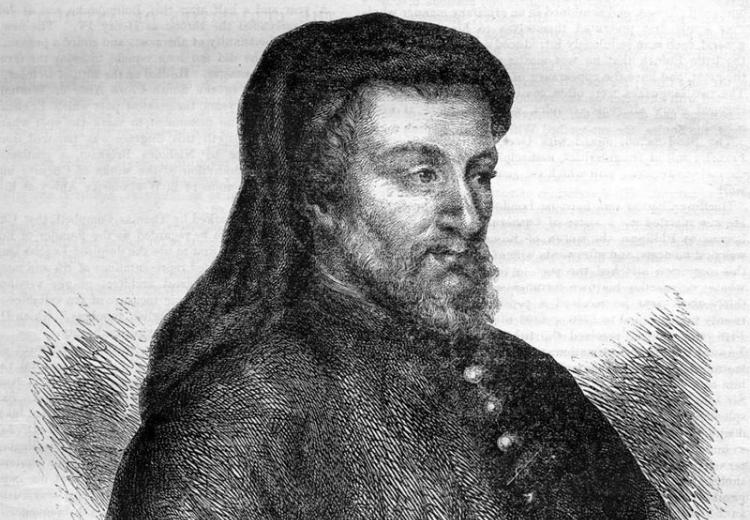Chaucer's "Wife of Bath"

Geoffrey Chaucer.
Chaucer's "The Wife of Bath"
1
Perhaps the best-known pilgrim in Chaucer's Canterbury Tales is Alisoun, the Wife of Bath. The Wife's fame derives from Chaucer's deft characterization of her as a brassy, bawdy woman—the very antithesis of virtuous womanhood—who challenges the prevailing gender inequality of the times. Yet Chaucer never fully lets on whether she is the object of satire, the instrument of its delivery, or perhaps a combination of both.
- The General Prologue to The Canterbury Tales
- Wife of Bath's Prologue and her tale
- Background on the Wife's Prologue and her tale.
2
Meet the pilgrims! Chaucer's pilgrims are on a lengthy trek—a pilgrimage to seek spiritual aid from the shrine of Thomas Becket at Canterbury Cathedral.
- Brief explanation of pilgrimages
- The martyrdom of Thomas Becket
- Historic look at Canterbury Cathedral
Read the introduction and first five lessons on the "Teach Yourself to Read Chaucer’s Middle English" page at the EDSITEment-reviewed Geoffrey Chaucer Website. You should notice two important differences between speaking Middle English and the English we speak today. First, many of the vowel sounds in Middle English were pronounced differently; second, the final "e" in Middle English is often pronounced rather than silent. Practice reading the lines aloud as you scan the lines for meter using the handout. Next, listen to the recording of the first 18 lines of the General Prologue, read by J.B. Bessinger, Professor Emeritus at NYU. How does your own pronunciation compare with the one you just heard?
- "Teach Yourself to Read Chaucer's Middle English" guide at the Geoffrey Chaucer Website
- Reading Geoffrey Chaucer's Canterbury Tales Handout
3
Like Chaucer himself, the Wife of Bath is well read. The Wife of Bath's defense of her five marriages rests upon her ability to acknowledge the statements made by the church fathers on marriage and virginity, and to offer her own interpretation of them. Below are several passages from the writings of St. Paul and St. Jerome, two men whose opinions about women the Wife specifically alludes to in her Prologue. In the space below each passage on the handout The Wife of Bath Debates the Church Fathers, locate the passage in the Wife's Prologue where she makes references to these ideas about marriage and virginity, note the line numbers, and write a modern translation in the space provided.
- "On the Song of Songs" from the Treatise Against Jovinian by St. Jerome
- On Marriage and Virginity from the Treatise Against Jovinian by St. Jerome
- The Bible on Marriage
Discussion questions:
- Overall, how does the Wife's opinion differ from that of the teachings of the church fathers?
- On what issues does she agree, if any?
- How does she refute the view that marriage is less virtuous than celibacy?
- What is the basis for her claim that wives should have authority over their husbands in marriage?
- How does she argue against her third husband's antifeminist accusations?
- How does this compare with the tactics she uses against her fifth husband, Jankyn?
- How does her frank attitude and love of life add to—or detract from—the force of her argument?
4
To place Chaucer's work in historical context, examine the institution of marriage in medieval times and the place of women in medieval society. In addition to library resources, background on these topics is available through EDSITEment-reviewed resources listed below.
As one possible exercise, take a glimpse at a medieval marriage between an older man and a young girl in The Goodman of Paris text, a document composed at the time Chaucer was writing The Canterbury Tales. In Chaucer's day, it was not uncommon for young women to marry older men. The Wife's first three husbands were men much older than she was, but unfortunately, they had neither the energy nor the wit to tame her. In this document, the much older husband offers advice to his fifteen-year old wife about how to behave properly and maintain an ideal marriage. Compare Goodman's advice to the behavior of the Wife during her marriages.
Would the Wife of Bath have made a suitable mate for the Goodman of Paris?
